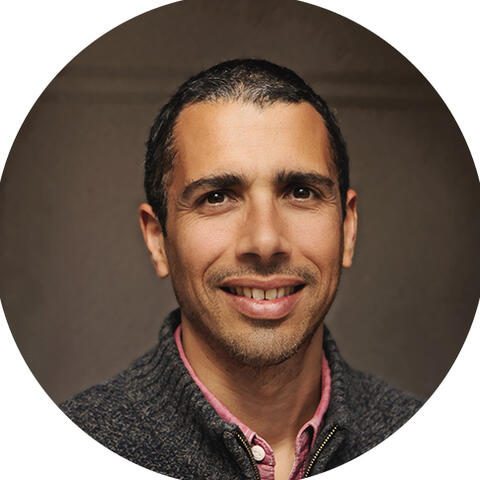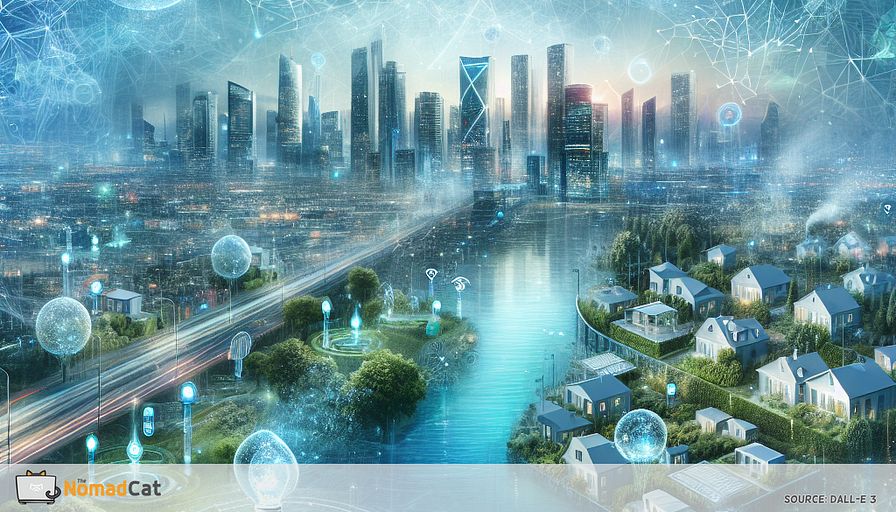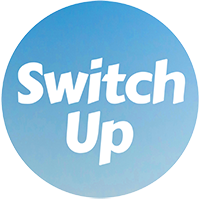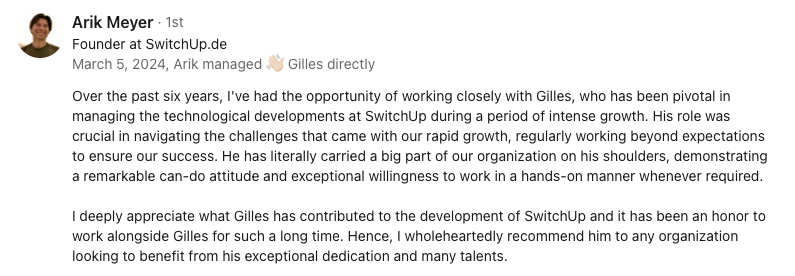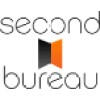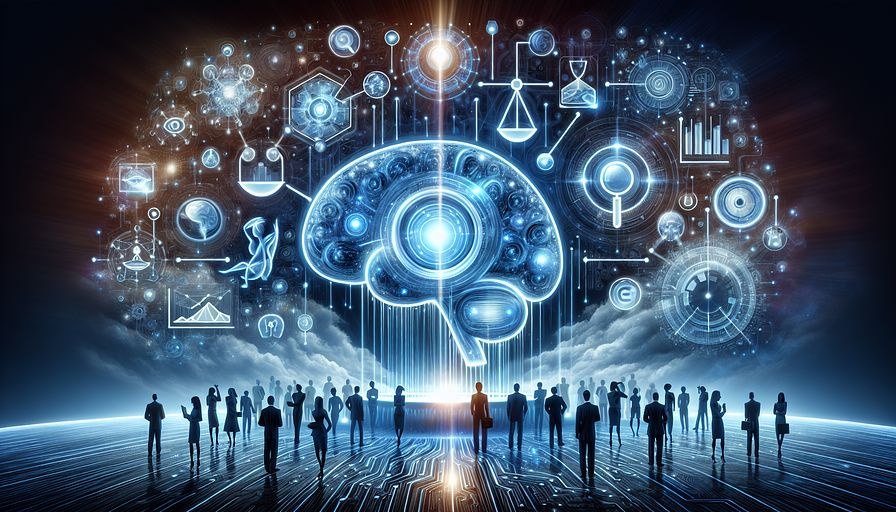Abstract:
Urban water management is increasingly relying on smart technologies to ensure sustainability and efficiency as cities grow. Traditional methods are proving insufficient, prompting the adoption of innovations like the Internet of Things (IoT) and Artificial Intelligence (AI). IoT sensors provide real-time data for monitoring water systems, enabling cities like Copenhagen and Barcelona to detect and address leaks early, thus reducing waste and maintaining a steady supply. Smart water meters further this effort by monitoring usage patterns and improving billing accuracy. AI enhances these systems by predicting water demand and optimizing infrastructure operations, as seen in MIT's studies on distribution schedules. Additionally, urban offices are adopting water-saving technologies, such as low-flow fixtures and greywater recycling, which significantly cut water use. Outside, smart irrigation and rainwater harvesting reduce the demand on city supplies. Cities are also embracing landscaping innovations like xeriscaping and green roofs to conserve water and enhance biodiversity. Collectively, these technologies not only offer economic savings and resource efficiency but also attract eco-conscious investors and partners, promoting further sustainability initiatives. Overall, these advancements play a crucial role in creating resilient urban communities with reduced environmental impact.
Water is essential for cities, yet managing it becomes increasingly challenging as urban areas expand. Traditional methods are proving insufficient, but smart technologies like the Internet of Things (IoT) offer promising solutions. Imagine a network of sensors providing real-time data, enabling cities to detect and address leaks before they escalate. These innovations are reducing waste and ensuring a consistent supply, paving the way for a sustainable urban future.
Optimizing Urban Water Management Through Smart Technologies
As cities grow, so does the need for improved water management. Smart city technologies, particularly IoT, are revolutionizing the way cities manage their water resources. IoT allows cities to enhance water conservation efforts, ensuring a reliable supply while minimizing waste. European tech startups, in particular, can leverage these technologies to address unique challenges like scalability and resource constraints.
IoT Sensors in Urban Water Management
IoT sensors significantly impact urban water systems by providing real-time data, which helps cities monitor and manage their water systems more effectively. These sensors enable city officials to quickly identify and resolve issues such as leaks or abnormal usage patterns, maintaining system efficiency.
Cities like Copenhagen and Amsterdam have seen notable improvements with these technologies. Copenhagen uses IoT to monitor water quality, ensuring systems operate efficiently and sustainably. Barcelona has reduced water loss by 25% using IoT, while Dubrovnik has achieved a 30% decrease, demonstrating the power of early detection.
This proactive approach conserves water and extends the lifespan of water infrastructure, allowing for planned maintenance that uses resources wisely and keeps systems reliable. Next, we will explore another crucial technology: smart water meters.
Smart Water Meters and Consumption Monitoring
Smart water meters are vital for managing city water resources. They provide real-time data on usage patterns, enabling informed decisions about water use. By understanding these patterns, people can use water more efficiently.
These meters also help detect leaks and overuse early, promoting conservation by addressing issues before they worsen. Acoustic sensors, for example, are highly effective in identifying leaks.
Integrating these meters with IoT platforms enhances billing accuracy and efficiency, ensuring users are billed correctly, reducing disputes, and increasing satisfaction. This transparency supports urban sustainability by making water management more accountable. European startups can implement these solutions to overcome challenges related to limited resources.
Combining these systems with AI can further improve efficiency, underscoring the need for innovative solutions in urban water management.
Harnessing AI for Efficient Water Management
AI technologies are becoming indispensable for managing and distributing water in urban areas. These intelligent systems help cities predict water demand more accurately and streamline operations.
AI-Powered Predictive Models
AI is transforming how we predict urban water demand, employing models like Artificial Neural Networks (ANNs) and Support Vector Machines (SVMs). These models surpass traditional methods in accuracy, aiding planners in resource allocation, waste reduction, and ensuring water availability where needed.
AI also optimizes water infrastructure operations, reducing energy consumption and leaks through reinforcement learning and genetic algorithms. Cities save money and reduce their environmental impact, fostering greener urban spaces.
Deep learning assists in forecasting peak demand periods. MIT's studies indicate AI can adjust distribution schedules to prevent shortages, ensuring a steady supply. Accurate AI-driven forecasts enable cities to manage resources wisely. Startups can adopt these models even with limited resources, enhancing their operational efficiency.
AI in Leak Detection and Infrastructure Resilience
AI enhances water infrastructure resilience by advancing leak detection and planning. Machine learning identifies leaks by detecting irregular patterns, allowing for prompt repairs. This conserves water and extends the life of infrastructure.
AI also supports strategic planning for future resilience by simulating urban growth and climate impacts, offering insights for adaptive strategies. These simulations help maintain robust water systems prepared for future challenges. European tech startups can leverage these insights to develop scalable solutions.
Embracing Water-Saving Technologies in Urban Offices
As offices evolve, water-saving technologies are crucial for sustainability. From smart fixtures to recycling systems, these innovations can significantly reduce water use.
Water-Efficient Fixtures and Recycling Systems
Water-efficient fixtures, such as low-flow toilets, are essential for reducing office water consumption. The EPA reports that WaterSense labeled toilets can save up to 13,000 gallons annually. These fixtures reduce water use by limiting flow rates, making them a smart choice for eco-friendly practices.
Sensor-activated faucets minimize waste by only running water when necessary. According to the American Water Works Association, they can reduce water use by up to 30% in commercial spaces.
Recycling systems, like greywater systems, repurpose water from sinks and showers for non-potable uses, decreasing reliance on fresh water. San Francisco's greywater system has reduced potable water use by 60%.
Smart Irrigation and Rainwater Harvesting
Outside offices, smart irrigation systems conserve water by adjusting schedules based on weather and soil conditions. The University of Arizona has reduced water use by 30% with these systems.
Rainwater harvesting systems decrease demand on city water supplies. Melbourne's CH2 building has cut mains water use by 72% with such a system. These initiatives demonstrate a commitment to resource efficiency.
Urban Landscaping Innovations to Save Water
Innovative landscaping techniques are essential for reducing water use in urban areas. Xeriscaping and green roofs are key strategies.
Drought-Resistant Landscaping
Xeriscaping employs drought-tolerant plants to reduce irrigation needs. Denver's promotion of this method led to a 60% reduction in outdoor water use. Replacing grass with drought-resistant landscaping saves water and maintenance costs. Las Vegas has saved over 100 billion gallons with its Water Smart Landscapes program.
Green Roofs and Urban Biodiversity
Green roofs reduce stormwater runoff and enhance biodiversity. Chicago's City Hall green roof decreases runoff by 40-80%. Bosco Verticale in Milan absorbs CO2 and promotes urban biodiversity.
By adopting these innovations, cities can conserve water and improve their ecological landscapes, creating vibrant, livable environments.
Economic and Environmental Benefits of Water Conservation Technologies
Water conservation technologies provide significant environmental and economic advantages.
Cost Savings and Resource Efficiency
Implementing water-efficient systems reduces utility costs and enhances efficiency. Smart meters and low-flow fixtures decrease water use and bills. UK office buildings have achieved a 15% reduction in water use with water management systems.
These savings attract eco-conscious investors. The benefits can be reinvested in further sustainability initiatives, improving financial health and environmental stewardship.
Attracting Eco-Conscious Investors and Partners
Sustainability initiatives appeal to investors focused on environmental impact. Companies utilizing water conservation technologies stand out to investors seeking sustainable practices, facilitating funding and partnerships.
Aligning with eco-friendly partners opens new market opportunities. Collaborations lead to shared resources and knowledge, benefiting both parties in their sustainability goals.
Urban water management is evolving with smart technologies leading to sustainability and efficiency. IoT sensors and smart water meters are essential for monitoring and maintenance, reducing waste, and ensuring a reliable supply. AI's predictive capabilities optimize demand forecasting and leak detection. Embracing these innovations helps cities cut costs and environmental impact, creating sustainable, resilient communities.
